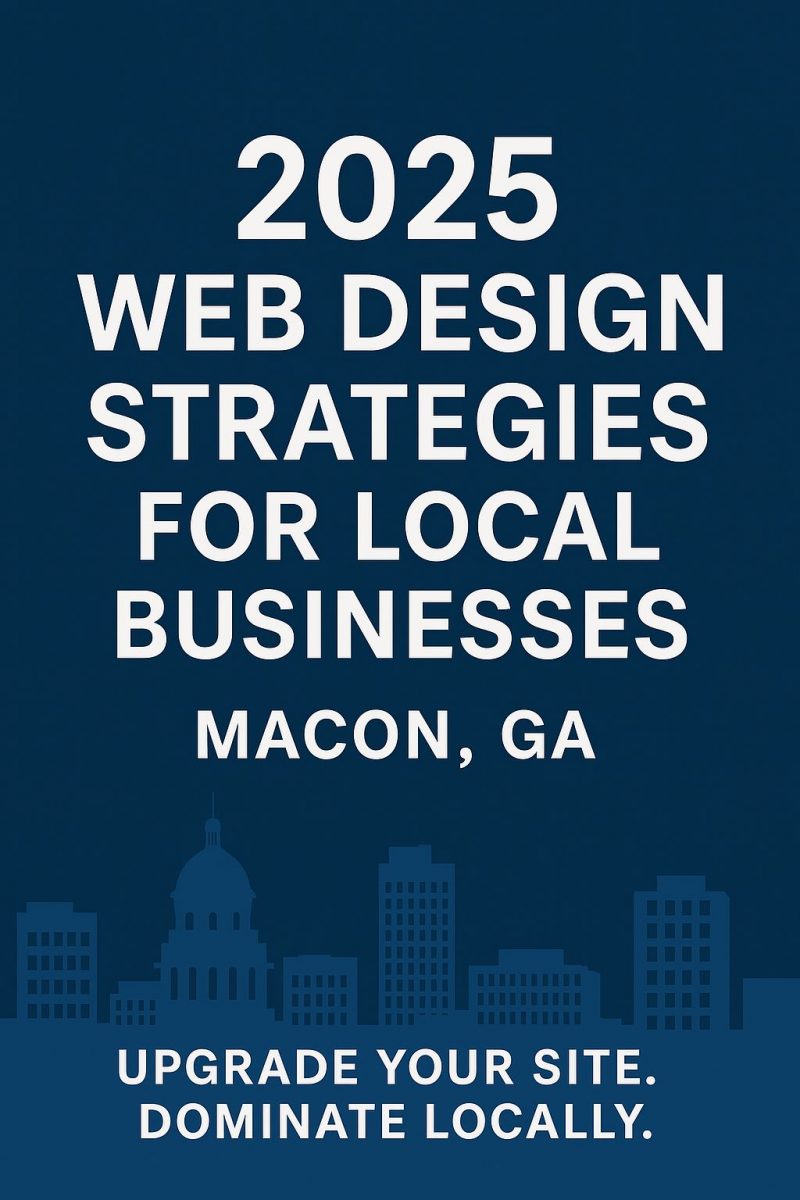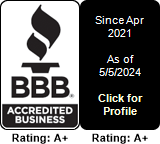Why Every Macon-Based Business Needs Geotargeted Design Elements in 2025
For any business competing in a saturated digital landscape, location matters more than ever. Websites that embrace localized design elements aren’t just visually tailored. They feel grounded in the community they serve. In practice, this means more than listing a ZIP code or slapping “local” in your title tag. A geotargeted website reflects the cultural cues, preferences, and visual familiarity of its market. It might be a background photo that subtly features a local landmark, client testimonials that reference neighborhood names, or even blog content built around seasonal events relevant to your area. These cues don’t just humanize your brand. They establish instant credibility. And search engines notice. Google now factors regional relevance into ranking signals more heavily than ever, and sites that align themselves with specific markets are rewarded. But most importantly, your audience notices. A potential customer who sees their town represented in your language and layout is more likely to trust your service. For any serious entrepreneur in Macon, GA, investing in geo-relevant digital identity is no longer an option. It’s a strategic necessity.
Designing for Micro-Moments: How Split-Second UX Impacts Local Engagement
People don’t browse websites anymore. They make snap judgments in fragments of a second. These tiny decision windows, called micro-moments, are where users decide whether to explore further, act, or leave. Designing for these moments means anticipating user intent with ruthless clarity. Forget complex menus and passive sliders. Instead, give visitors clear, direct access to the information or service they came for, fast. A top navigation bar that adapts to mobile, a CTA above the fold, and immediate trust signals (like reviews or awards) can make all the difference. Effective micro-moment design involves prioritizing speed, intentionality, and visual hierarchy. If someone is standing outside, trying to schedule an emergency appointment or order from their phone, their patience is nonexistent. They’re not scrolling. They’re skimming, tapping, reacting. Your job is to eliminate hesitation and guide them toward action. Even small enhancements, like button placement or load speed, can convert indecision into revenue. For service providers in Macon, GA, who often rely on word-of-mouth and community reputation, micro-moment optimization can bridge the gap between digital browsing and real-world business.
How to Futureproof Your Web Design for Algorithm, Browser, and Device Changes
A beautiful site is worthless if it breaks on the next update. That’s the reality of today’s web environment, where algorithms evolve, browsers update, and devices diversify faster than most businesses can react. Futureproofing your site doesn’t mean chasing trends. It means building solid foundations that can weather change. That starts with semantic HTML5, scalable CSS frameworks like Flexbox or Grid, and a CMS setup that allows modular content updates without full redesigns. It also means embracing speed-first performance practices, such as image compression, font subsetting, lazy loading, and modern caching methods. Google’s algorithm changes aren’t slowing down, and with Core Web Vitals now influencing rankings, performance is inseparable from visibility. Responsive design must also extend to devices beyond phones, think foldables, smart TVs, and browsers with unique quirks. Design testing should be cyclical, not occasional. Most importantly, keep your accessibility up to date, from ARIA labels to keyboard navigation. Futureproof design is less about aesthetic innovation and more about structural resilience. For digital brands operating out of Macon, GA, investing in this kind of adaptability ensures you don’t just keep pace. You stay ahead.
Designing Contact Pages That Actually Convert: Beyond Just a Form and a Map
A contact page isn’t just a functional necessity. It’s a strategic opportunity to convert interest into action. Yet too many businesses rely on a default layout: a bland form, a phone number, and maybe a map. This passive approach misses the moment when a user is ready to engage. To maximize conversions, the page must do three things: build trust, reduce friction, and offer options. Instead of “Contact Us,” consider a headline like “Let’s Start Solving Your Problem Today.” Show expected response times, such as “Replies within 1 business hour,” to encourage urgency. Offer alternative channels: live chat, scheduling tools, even social DMs. Each one meets different user preferences. Reinforce credibility with testimonials, badges, or quick staff bios. Design the form for ease: minimal required fields, mobile-optimized spacing, and clear privacy reassurance. The layout should anticipate objections, for example “What happens after I submit?” and proactively answer them. A polished contact page closes the loop between interest and conversion. For businesses rooted in Macon, GA, it’s also a chance to reaffirm accessibility and approachability, especially in smaller communities where personal connection still matters.

Why Font Load Speed Matters: Typography and Site Performance Go Hand-in-Hand
It’s easy to overlook typography as a cosmetic decision, but web fonts are one of the most underrated threats to site performance. Every font file adds weight to your load time. Every extra weight or style variation compounds that issue. If not managed properly, they cause rendering delays, blank spaces, and visual jankiness, especially on mobile. The solution isn’t defaulting to Times New Roman. But it does require smart restraint. Use no more than two type families, preload the essentials, and leverage font-display strategies that prioritize content visibility. But load speed is just the beginning. Typography also drives readability and usability. Choose fonts with strong contrast, adequate spacing, and clean kerning. A paragraph that’s hard to read—even if the font is “on brand”—damages engagement. Users scroll faster, bounce sooner, and trust less. Accessibility matters, too. Proper sizing, line height, and clarity affect how well your content performs for all users, including those with visual impairments. Brands that strike the right balance between visual style and technical discipline benefit in both form and function. For designers working with clients in Macon, GA, these small choices often separate elegant sites from effective ones.
The Role of Visual Anchors in High-Retention Website Design for Local Brands
You’ve got three seconds to convince someone to stay on your website. Visual anchors are how you use those seconds wisely. These are elements, like interactive icons, sticky navigation bars, scroll-triggered animations, and strategically bold headlines, that guide attention through your site without overwhelming it. Anchors provide structure. They break content into digestible parts, keep visitors oriented, and offer moments of decision. That might be a floating CTA button, a testimonials slider halfway through a service page, or even a subtle background shift signaling the next content zone. Effective use of visual anchors reduces cognitive fatigue, increases scroll depth, and drives behavioral flow. They’re especially powerful in content-heavy layouts, where too much uninterrupted text would otherwise scare people off. Balance is key. Too few, and users get lost. Too many, and you trigger decision paralysis. Local brands need this even more. If you’re serving a tight-knit market, your design should feel intentional and steady. That sense of orientation helps build credibility. Businesses in Macon, GA, looking to grow customer trust online can greatly benefit from using visual anchors to create clarity, rhythm, and emotional momentum across every page.
Your customer’s first impression happens online. And you only get one shot. As the go-to web design company in Macon, we craft websites that are fast, intuitive, and built for results. Every layout, button, and headline is designed to reduce friction and drive action. This isn’t about trendy visuals. It’s about building trust, guiding decisions, and converting visits into real opportunities. The difference isn’t just aesthetic. It’s measurable, and it starts with your next click.
Want a full breakdown of how structure, layout, and user flow turn ideas into outcomes?
Read our Definitive Guide to Website Design


